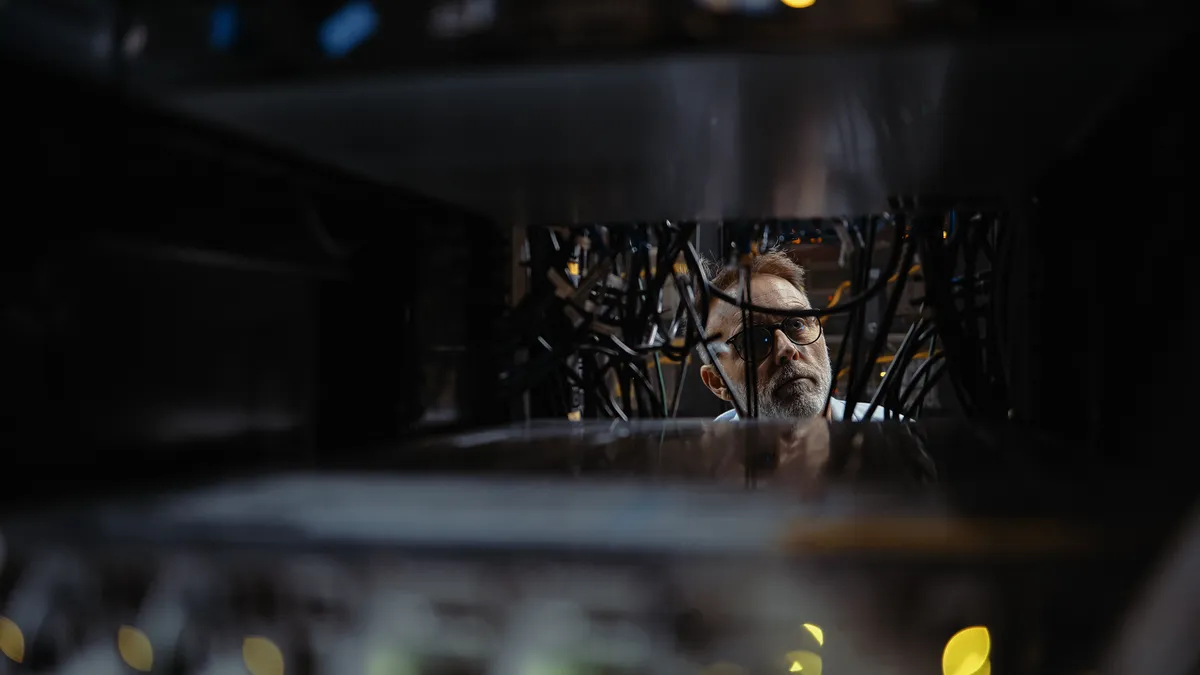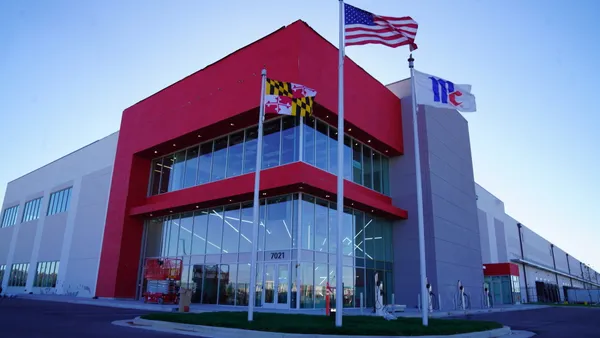The chief information officer (CIO) and chief marketing officer (CMO) dynamic has been talked about for a while, but given the recent, digitally driven explosion of consumer data and its critical importance in driving success in the customer journey, there's never been a more urgent opportunity for the CIO and CMO to collaborate. EY research shows that it's clear both roles are eager to align, balancing their skill sets to elevate the partnership and create business success.
When we asked marketing teams where they want to increase their spending, they chose "data and analytics" slightly more than "content development and management" (61% to 59%, respectively). That is a clear indication of just how vital CMOs view their CIO counterparts.
How the transformative CIO can optimize the marketing journey
The notion of CIOs simply "keeping the lights on" is outdated. The role is evolving from that of a technology service provider to a strategic advisor and partner to key functions of the business. The CIO's strategic role intersects with every other C-level function, including the CMO, chief financial officer (CFO), the chief supply chain officer (CSCO) and the board as a whole.
As for the CIO-CMO partnership, it is extremely valuable in driving business transformation because marketing activities directly involve customers and demand generation. With a strategic mindset, the CIO can help fulfil the CMO's strategic mission. That mindset embraces four qualities — transparency, flexibility, reliability and security — that must infuse operational activities, tactics and day-to-day collaboration.
- Visibility: For marketers, timely information to meet customer needs is a top priority. The CIO should be able to track, measure and communicate customer demand in real-time to the CMO. That transparency starts and ends with data. CIOs must find ways to unify data sources, build a flexible delivery model and verify that data consumption is scalable using first-party data sources, such as personally identifiable consumer information. Second-party data derived through partnerships and third-party data, such as syndicated research sources, will also be predictively and correlatively valuable.
- Flexibility: Given its continuous evolution, the digital world requires a flexible approach. For instance, 83% of CIOs expect the demand for new digital products or services to increase in 2021 — remarkable number given the dislocations of 2020. By flexibility, we mean a low-code environment that still enables agile business transformation. Low-code environments are nimble and have an "on-demand" posture that enables marketers to quickly respond to emerging customer trends and new business models. Digital road maps must provide for a product mindset that is constantly revolving around new use cases to create value in the business for consumers and customers.
- Reliability: Without reliability, CIOs become side-tracked by day-to-day firefighting and lack the time to enable marketing transformation. In that case, the most advanced, business-centric marketing technology stack will be of little value. CIOs should help enable technology architectures that support data-driven marketing frameworks that anticipate an ever-changing regulatory environment, constant changes in the consumer technology landscape and future human behaviors in both a B2C and B2B context.
- Security: When managing customer relationships, there is no higher calling than security. Losing customer data via a cyber breach can instantly destroy trust built over years by the marketing organization. Further, the new pressures of the General Data Protection Regulation, the California Consumer Privacy Act and a host of other pending state regulations will continue to keep the CIO and CMO working very closely around how technology reinforces privacy and data security.
How the CMO's agenda intersects with technology
Marketing effectiveness begins and ends with customers — identifying them, understanding their requirements, fulfilling their needs and measuring their satisfaction. We've identified seven critical elements of success for the CMO-CIO relationship, each of which intersects with the four qualities that enable CIO success:
Technology architecture: Many companies are dealing with outdated, disparate IT systems that need attention. It's vital to have a well-integrated technology stack but deploying new platforms and tools must be approached strategically with return on investment (ROI) in mind. If the "latest and greatest" technology doesn't deliver value to the CMO, it's likely to end up a wasted expenditure.
Alignment between the CMO and CIO is a condition of success, and this requires communication and trust. For instance, some technologies may offer the marketing function greater (or lesser) functionality, depending on how controls are implemented and how the implementation is customized. Reliability must be a given but flexibility here is also critical. Striking the right balance between what some might consider niche implementations and too much standardization is crucial.
Data foundation: Data is the source of customer insight. And today, data about customer attitudes and behaviors shows up in more places than ever. That's the good news. The challenge is identifying, collecting and validating it. And of course, data security is non-negotiable.
New technologies such as data lakes, meshes and fabrics can help the CMO derive the fullest insights from these reservoirs of information wherever they may sit in the organization. Gone are the days of having to literally relocate data and get it all in one place from multiple data warehouses. Now, modern data foundations support the CIO to become a powerful partner to the CMO by offering agile solutions that allow data to be distributed and yet be a source for predictive analytics and insights.
Scale of data: The phase-out of third-party cookies on most web browsers in 2022 will profoundly affect customer relationships and data-driven marketing. Meanwhile, first-party cookies will continue to have value based on the engagement that consumers have on company sites but companies will likely need to scale their first-party and second-party data overall. The bottom line: companies will have to find new and different ways to market.
First-party data may very well become the key source for realizing ROI targets but few companies have built processes to cross-functionally integrate this information. This type of data scaling and reuse is critical to improved customer insights across the organization.
Human enablement: The most sophisticated, functional tech stack won't have much value if people don't know how to leverage it. That requires a framework that enables smooth onboarding, compelling training that is often "hands-on" and ongoing learning. The best technology, without an organization capable of deploying it, will not realize its business goals.
Outside of human resources or learning and development departments, this is another area where the CIO and CMO must work in lockstep to achieve success. Together they can help make sure that acquired technologies and capabilities realize the marketing vision in the way the talent agenda is executed.
Use case prioritization: The right use cases transform abstract notions of customer behavior into tangible, actionable strategies. Unfortunately, CIOs are often overambitious in their approach to use case identification and technology investment.
CMOs must work with the CIO to prioritize use cases based on what the organization is truly ready to deploy at scale to be sure technology is not overbuilt relative to marketing and organizational readiness. These decisions can directly impact the bottom line by delivering greater value.
ROI, key performance indicators (KPIs) and other metrics: It's crucial to balance both short-term and long-term ROI. The CMO and CIO must collaborate to deliver short-term ROI quickly (on a specific marketing campaign, for instance) and build long-term value when planning capabilities that may take several months or more to fully implement.
And to make the business case at the C-suite, KPIs and other metrics are vital to demonstrate ROI. These include short-term campaign metrics and longer-term measurements such as increased customer lifetime value. Reliable, repeatable processes to deliver this information are critical or the CIO risks getting bogged down in one-off requests.
Operating model: The most effective operating models are flexible. They balance centralized approaches to information, technology, channels and customer segmentation with decentralized approaches to serving customers by region or location.
Operating models must embrace and manage change and support the organization through those transitions. For instance, the CRM function has only recently migrated into the marketing organization. It's an important shift to the operating model and the CIO and CMO must work together to manage this change.
Summary
As CEOs require technology to enable the business, from customer interactions and channels to operations, the CIO must work in lockstep with the CMO to successfully meet or exceed ever-changing customer needs.










